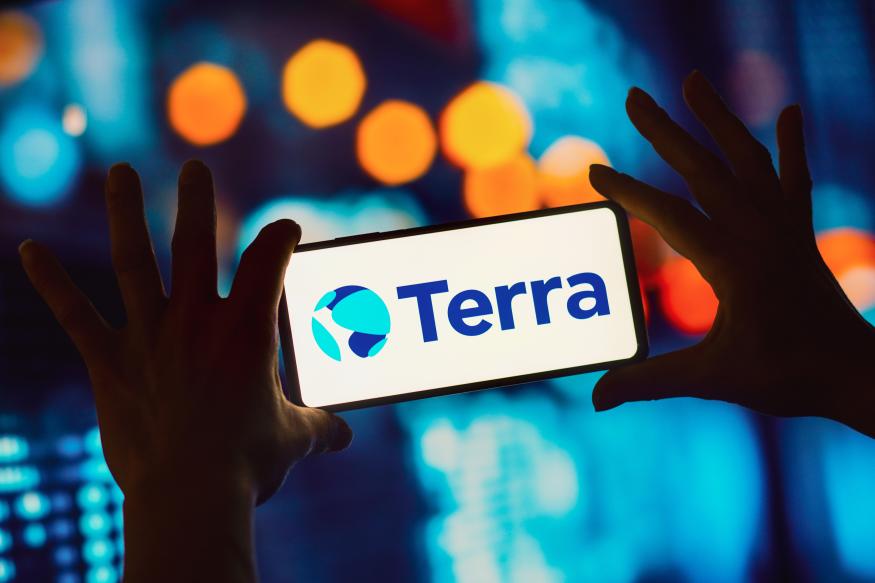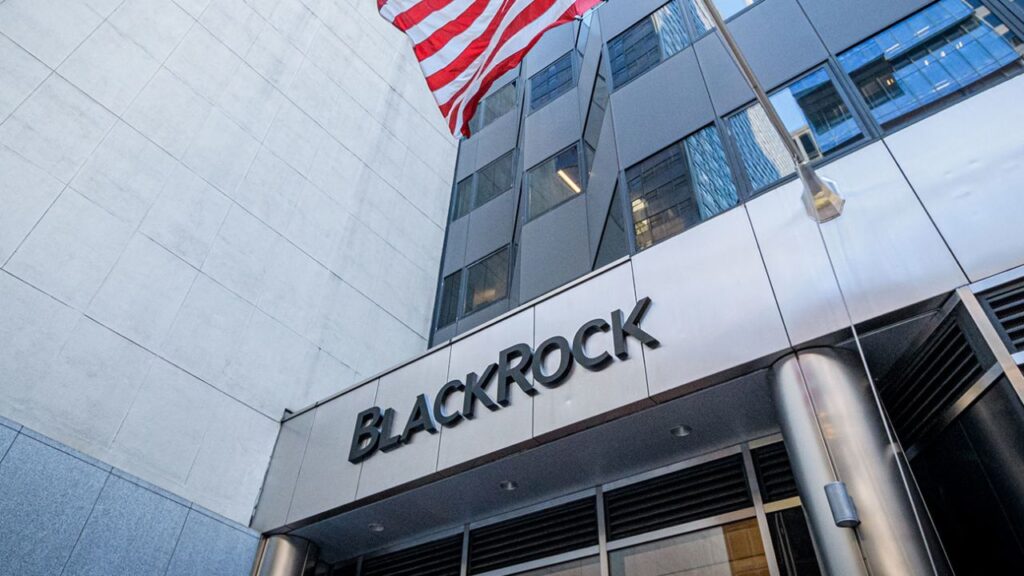BabyCat (BABYCAT) coin currently has a market cap of just $407,000 and it is trading on a handful of decentralized exchanges, like PanCake Swap.
BabyCat (BABYCAT), a new memecoin which was launched on April 4, has been tipped to emulate the success of Shiba Inu (SHIB) and Dogecoin (DOGE) and eventually become a mainstream memecoin.
Both SHIB and DOGE currently have a market capitalization in the billions of dollars, after they rose to prominence during the last crypto bull run.
And now, BABYCAT is being heralded as the next big memecoin, and its market cap is likely to breach the $10 million mark before 10 April.
If its market cap reaches $10 million, investors who are currently buying BabyCat Coin would generate a 2500% return on their investment.
BabyCat Coin’s value could go even higher than this, as it has been rumored that the token is set to be listed on MEXC, Bitmart and Bitget – in what would be its first centralized exchange listings.
Many investors are pouring funds into BabyCat Coin because of its massive growth potential and because, unlike most new memecoins, its liquidity pool is locked, which prevents a rugpull and ensures the coin will continue to rally in the coming days and weeks.
BabyCat has also announced massive burns planned for the coming days to boost the token’s price for holders.
Shiba Inu and Dogecoin Price Prediction
Shiba Inu (SHIB) is currently trading at $0.00002743 after gaining 1.73% in the last 24 hours.
It remains down 7% over the last week, but SHIB still has the potential to deliver 200%-300% returns over the course of this bull run.
Dogecoin (DOGE), meanwhile, has gained 3.46% in the last 24 hours and is trading at $0.1852.
The token is down almost 8% in the last 7 days, but the bulls are trying to build momentum and initiate a new rally.
Although DOGE and SHIB still have the potential to rise in the next few weeks and months, most memecoin investors are investing in small cap, new projects, like BABYCAT Coin, as they have much more upside potential and could potentially turn a few thousand dollars into millions of dollars.
Anthropic AI has recently unveiled a beta version of its “tool use” feature for the Claude suite of generative artificial intelligence (AI) models, accessible to all users of the Anthropic Message API.
This innovative feature permits users to enhance Claude with the ability to connect to external tools, thereby facilitating real-time information searches and the integration of third-party functionalities directly into Claude’s operations.
Users can implement straightforward code snippets within their account API interface, enabling Claude to incorporate external data into its dialogues.
An example highlighted by Anthropic demonstrates the integration of a third-party stock ticker into the AI model using around ten lines of code.
This integration allows Claude to obtain and relay stock prices directly from the source, ensuring accuracy and eliminating the reliance on potentially outdated web searches.
The “tool use” functionality in Claude is underpinned by a chain-of-thought reasoning model, empowering the AI to handle complex commands and integrate multiple third-party services.
This advanced capability enables Claude to manage multifaceted queries and perform detailed, step-by-step information processing and integration.
Anthropic states that Claude’s AI models are adept at handling a wide array of tool requests.
According to the company, “All models can handle correcting [sic] choosing a tool from 250+ tools provided the user query contains all necessary parameters for the intended tool with >90% accuracy.
READ MORE: DogWifHood (WIFT) Begins Trading on MEXC – But Will it Flip DogWifHat (WIF)?
These limits apply to the total number of tools, regardless of complexity.”
The crypto, Web3, and blockchain sectors stand to gain significantly from Claude’s tool use capabilities, as integrations developed for the platform can be seamlessly utilized within its API structure.
This opens up a plethora of potential applications, from integrating trusted real-time price tickers to achieving full interoperability with decentralized exchange interfaces.
Furthermore, users have the opportunity to link wallet managers and portfolio trackers to Claude, facilitating the creation of comprehensive trading workflows.
However, it’s important to acknowledge that AI models, including Claude, are susceptible to errors. Despite the reliability of integrations, Claude, as a general-purpose chatbot, is not specifically tailored for financial, cryptocurrency, or blockchain applications, which means that errors in outputs are still a possibility.
To submit a crypto press release (PR), send an email to sales@cryptointelligence.co.uk.
Ethereum co-founder Vitalik Buterin recently outlined the future steps towards streamlining the Ethereum protocol and reducing the resource requirements for nodes, in a process known as the Purge.
This initiative is a crucial phase in Ethereum’s evolution, aimed at eliminating obsolete network history and simplifying the system over time.
By discarding old data, the Purge significantly cuts down on the storage needs for nodes and reduces the protocol’s technical complexity.
During the Dencun hard fork, the implementation of Ethereum Improvement Proposal (EIP)-6780 marked a significant step towards simplification by phasing out many functions of the “SELFDESTRUCT” code.
Buterin highlighted the benefits of this move, stating, “it simplified the protocol by removing complexity and adding new security guarantees.”
He anticipates further progress with a new EIP that aims to completely do away with the SELFDESTRUCT code, thereby increasing the storage capacity of each Ethereum block.
Furthermore, the Purge introduces a mechanism for expiring old data through EIP-4444, allowing nodes to discard blocks older than one year.
READ MORE: How to Earn Real Crypto Trading Futures?
This change means that only recent blocks are necessary for nodes to stay synchronized with the chain’s current state unless specific historical data is requested.
Buterin expressed optimism about this development’s impact on decentralizing Ethereum’s node network, suggesting that it could maintain or even increase the network-wide distribution of historical data pieces.
Buterin also mentioned significant codebase reductions in Geth, Ethereum’s most popular client, by eliminating support for pre-Merge (proof-of-work) networks, and discussed a new 18-day storage policy for blobs post-Dencun, aiming to halve node data bandwidth to 50 gigabytes.
Lastly, he touched upon the need to remove precompiled contracts, which were initially designed for complex cryptographic operations not supported by the Ethereum Virtual Machine (EVM).
According to Buterin, the demand for these contracts has waned, and they have become a major source of bugs and challenges for new EVM implementations.
This move is seen as another step towards simplifying and securing the Ethereum network, as Buterin continues to push for improvements that enhance efficiency and security.
To submit a crypto press release (PR), send an email to sales@cryptointelligence.co.uk.
As the Terraform Labs versus United States Securities and Exchange Commission (SEC) trial nears its conclusion, attorneys have alleged that the crypto firm disseminated numerous false claims about its platform to investors.
According to a report from Reuters on April 5, SEC lawyers asserted in the U.S. District Court for the Southern District of New York that Terraform’s narrative was “built on lies.”
These falsehoods purportedly encompassed assurances regarding the stability of the algorithmic stablecoin TerraUSD (UST) and an integration with a South Korean payment application.
Louis Pellegrino, attorney for Terraform, reportedly defended co-founder Do Kwon’s public statements as truthful, suggesting that the SEC’s case relied on selectively presented information.
The civil trial against the SEC emerged over a year subsequent to the commission’s filing of a lawsuit against Terraform in February 2023.
“At that juncture, the regulator alleged that the platform and Kwon had “orchestrated a multi-billion dollar crypto asset securities fraud.”
Throughout the trial, SEC attorneys likened Terra to a “house of cards” that collapsed for investors in 2022.
The fallout from Terra’s demise contributed to a significant downturn in the crypto market, impacting entities such as FTX, BlockFi, Celsius, and others, which were subsequently compelled to declare bankruptcy.
The trial has proceeded in Kwon’s absence, as the Terraform co-founder remains in Montenegro pending a decision on extradition requests from the U.S. and South Korea.
Kwon was apprehended in March 2023 on charges related to the use of falsified travel documents.
In January, Judge Jed Rakoff postponed the start date of the SEC v. Terraform Labs trial to March 25, in a bid to accommodate Kwon.
Other prominent figures in the crypto sphere facing legal proceedings in the U.S. include former Celsius CEO Alex Mashinsky, slated for a criminal trial in January 2025, and former Binance CEO Changpeng Zhao, set for a sentencing hearing on April 30.
To submit a crypto press release (PR), send an email to sales@cryptointelligence.co.uk.
BlackRock, a leading global asset manager, recently revised its Bitcoin ETF (Exchange-Traded Fund) prospectus, introducing five prominent Wall Street firms as authorized participants.
This amendment, filed with the U.S. Securities and Exchange Commission on April 5, highlights the inclusion of ABN AMRO Clearing, Citadel Securities, Citigroup Global Markets, Goldman Sachs, and UBS Securities.
These firms join the ranks of existing participants such as JPMorgan Securities, Jane Street Capital, Macquarie Capital, and Virtu Americas, playing a vital role in the ETF’s operational framework by facilitating the creation and redemption of shares.
Authorized participants are instrumental to the ETF’s function, having the ability to exchange ETF shares for a basket of securities that mirrors the fund’s holdings or for cash.
This structure is critical for maintaining the ETF’s liquidity and aligning its share price with the underlying Bitcoin market value.
The addition of these new participants was seen positively by Eric Balchunas, a Bloomberg analyst, who interpreted it as a sign of growing interest from major financial institutions in the Bitcoin ETF space.
He remarked that these “big-time firms now want a piece of action and/or are now OK being publicly associated with this.”
In response to concerns over market manipulation, the Securities and Exchange Commission (SEC) has advocated for a cash creation and redemption mechanism for Bitcoin ETFs.
This model, differing from the traditional in-kind exchange, requires that ETF shares be created or redeemed through cash transactions.
This strategy aims to prevent potential intraday price manipulation by ensuring transactions are settled in cash, following the guidelines laid out by asset managers including Hashdex.
READ MORE: How to Earn with Toncoin On its Popularity Peak?
Leading asset managers like BlackRock, ARK Invest, and Grayscale have since adopted this mechanism in their filings, reflecting a sector-wide shift towards enhanced regulatory compliance.
March saw a notable increase in Bitcoin ETF trading volumes, with figures reaching $111 billion. However, some analyses suggest a cooling demand for these products.
Despite this, BlackRock’s iShares Bitcoin Trust (IBIT) remains at the forefront of the market in terms of trading volume and assets under management.
As of April 1, IBIT’s assets were reported at $17.6 billion, outpacing competitors such as Grayscale and Fidelity according to BitMEX Research.
This ongoing evolution of the Bitcoin ETF landscape marks a significant milestone in the integration of cryptocurrency investments within the traditional financial ecosystem.
To submit a crypto press release (PR), send an email to sales@cryptointelligence.co.uk.
On April 5, Bitcoin displayed resilience in the face of United States inflation indicators, buoyed by the anticipation of increased institutional investment.
Despite broader market anxieties, Bitcoin (BTC) found robust support, propelling its value to $68,630 post-Wall Street’s opening bell, as evidenced by data from Cointelegraph Markets Pro and TradingView.
Hovering around $68,000, the cryptocurrency’s uptick seemed to align with announcements that BlackRock, the globe’s premier asset manager, was integrating top U.S. banks into its Bitcoin exchange-traded fund (ETF) initiative, signaling a significant move towards mainstream financial acceptance.
The ETF’s inclusion list, revealed in an online document, boasted industry giants such as Goldman Sachs, Citadel, UBS, and Citigroup.
Eric Balchunas, Bloomberg Intelligence’s senior ETF analyst, commented on the development, stating, “Takeaway: big time firms now want piece of action and/or are now OK being publicly associated w this.”
He attributed the burgeoning interest in Bitcoin to the success and substantial inflows witnessed by the ETFs.
Indeed, the landscape of Bitcoin investment has dramatically evolved, with nine recent products cumulatively managing over 500,000 BTC as of April 4, excluding assets in the newly converted ETF, the Grayscale Bitcoin Trust.
This growing institutional foothold has notably shielded Bitcoin from adverse market reactions to U.S. inflation trends, particularly following unexpectedly robust employment data which hinted at a prolonged period of elevated interest rates by the Federal Reserve.
The CME Group’s FedWatch Tool further underscored this sentiment by dialing back expectations for a rate cut within the year.
Market analysis from Daan Crypto Trades highlighted a significant interaction with sell-side liquidity at market open.
CoinGlass data also pointed to a buildup of sell orders past the $69,000 mark, marking a critical juncture for Bitcoin’s immediate price trajectory.
Jelle, another trader, underscored the cryptocurrency’s ability to establish a higher low on hourly charts, suggesting a potential for continued upward momentum.
“Break $69,000 and all bets are off,” he remarked, reflecting a cautiously optimistic outlook for Bitcoin’s near-term price movement.
To submit a crypto press release (PR), send an email to sales@cryptointelligence.co.uk.
Solana‘s price witnessed a sharp downturn today, plummeting by 9.25% to hit its lowest point in two weeks at $168.
This decline aligns with a broader negative trend in the cryptocurrency market, which experienced an overall decrease of 3.8% on April 5.
Among the key reasons contributing to SOL’s price drop is skepticism surrounding the Federal Reserve’s potential interest rate adjustments and reports highlighting transaction failures on the Solana blockchain.
Recent data from Dune Analytics revealed a notable surge in memecoin transaction failures on the Solana network, with over 75% of non-vote transactions failing on April 4, marking the highest failure rate observed.
However, Mert Mumtaz, CEO of Helius, disputed this narrative, attributing the majority of failed transactions to “bot spam.”
Despite the contested nature of the transaction failure data, the rumors alone have impacted SOL’s performance, causing it to underperform compared to the broader crypto market on April 5.
Furthermore, SOL’s price decline today is in tandem with significant corrections seen in its top memecoins, such as Bonk (BONK) and Dogwifhat (WIF), which dropped approximately 13.2% and 9% respectively in the last 24 hours.
Notably, the newly-launched memecoin Cat in a Dogs World (MEW) experienced a drastic 30% crash during the same period.
READ MORE: Spot Bitcoin ETFs Amass Over 500,000 BTC, Signaling Strong Institutional Interest
Solana’s correlation with its memecoin projects has strengthened recently, with its daily correlation coefficient with BONK reaching 0.83 and with WIF at 0.53 on April 5, indicating their considerable influence on SOL’s market dynamics.
Additionally, U.S. Treasury futures data as of April 5 suggested that the Federal Reserve might delay interest rate cuts until September, with traders anticipating a more conservative rate cut of about 67 basis points for 2024.
This shift in expectations follows improved U.S. labor market data, with the unemployment rate decreasing to 3.8% in March.
From a technical analysis standpoint, Solana’s price decline today fits within its prevailing ascending triangle pattern, typically considered bullish.
This pattern suggests a potential bounce back for SOL towards $200 by the end of April, with a breakout potentially propelling its price to $240.
However, a drop below the triangle’s lower trendline could invalidate this setup, leading SOL towards its 50-day exponential moving average near $160 by April’s end.
To submit a crypto press release (PR), send an email to sales@cryptointelligence.co.uk.
Bitcoin Cat (BTCAT) is being tipped as the next Shiba Inu (SHIB), with some investors expecting it to reach a $50 million market cap by the end of April.
Bitcoin Cat (BTCAT), a new Solana-based memecoin, has surged 110% in the last 24 hours, as excitement builds over the coin’s listing on MEXC on Saturday.
This will be BTCAT’s first centralized exchange listing, with it currently only trading on Raydium and Jupiter.
Despite its recent rally, Bitcoin Cat still only has a market cap of around $760,000, emphasizing how much potential this Solana coin has over the next few weeks and months.
Some investors are predicting its market cap to hit $50 million before the end of April, delivering around 7000% returns to investors who buy in at the current price of $0.000000004347 per token.
Others are looking even further ahead and expecting it to hit well over $500 million, amid rumors that Bitcoin Cat is already in talks to get listed on Binance.
Aside from the imminent MEXC listing, BitMart have also confirmed that Bitcoin Cat will be listed on their exchange.
The rise of Bitcoin Cat comes amid the broader Solana memecoin craze, with dozens of coins spawning allowing investors to turn a few thousand dollars into millions within weeks or even days.
This is undoubtedly much riskier than holding Bitcoin or Ethereum, but with the large cap cryptos trading sideways in recent days, more and more investors are switching to low-cap memecoins in search of eyewatering gains.
DogWifHood (WIF) began trading on MEXC on 5 April, after previously only being available on a couple of decentralized exchanges.
DogWifHood (WIF) is aiming to eventually flip DogWifHat, as the new memecoin gains momentum and is poised to benefit from growing hype surrounding the TON Network.
On 5 April, DogWifHood became the only TON-based memecoin to be available to buy on a centralized exchange, as the WIFT/USDT pair began trading.
The token’s market cap currently stands around the $6 million mark, while DogWifHat boasts a market capitalization of around $3.36 billion, following its meteoric rally so far in 2024.
However, while there is currently a huge difference in market cap and token price between these two dog-themed memecoins, DogWifHood does stand a chance of potentially flipping DogWifHat’s market cap.
DogWifHood is expected to surge as a result of the Notcoin launch later this month, and additional CEX listings could see $WIFT post 500%-700% gains over the rest of April.
If this were to happen, DogWifHood’s market cap would still be under the $50 million mark and would have plenty more upside potential for the rest of Q2 and the remainder of 2024.
DogWifHat, meanwhile, is looking to grow further from its position as the third-largest memecoin by market cap, and eventually take on Shiba Inu (SHIB) and Dogecoin (DOGE).
To submit a crypto press release (PR), send an email to sales@cryptointelligence.co.uk.
Since their launch on January 11, nine out of ten new spot Bitcoin exchange-traded funds (ETFs) have collectively amassed over 500,000 BTC.
This figure represents 2.54% of the total bitcoins currently in circulation.
Farside Investors reports that, after a significant day of trading on Thursday, these funds experienced inflows of $287.7 million in Bitcoin.
Consequently, the value of the Bitcoin held by these nine ETFs surged to $35 billion over the span of 54 trading days.
Cumulatively, all U.S.-based spot Bitcoin funds, including those managed by Grayscale, now control 835,000 BTC.
This stash accounts for nearly 4% of all bitcoins available, underscoring the growing influence of institutional investments in the cryptocurrency sector.
The trend towards ETF inflows has seen a resurgence this week, with a recorded $845 million entering the market.
This reverses a previous pattern of outflows that began on March 18.
READ MORE: Grayscale Maintains Optimism for May Approval of Spot Ether ETFs Despite SEC Engagement Concerns
Notably, on March 28, these ETFs witnessed inflows totaling $183 million, led by BlackRock’s IBIT fund, which alone attracted $95 million.
Other significant contributions came from Fidelity and Bitwise, each with inflows of approximately $67 million, and Ark 21Shares, which secured $27.6 million following a substantial $200 million influx on the preceding Wednesday.
Meanwhile, Grayscale’s GBTC fund recorded an outflow of $105 million, marking its lowest level since March 12.
Since transitioning to a spot ETF in mid-January, Grayscale has reduced its GBTC fund by approximately 284,846 BTC.
In a related development, Bitwise has initiated the process for launching a spot Ethereum ETF by filing an S-1 application with the Securities and Exchange Commission on March 28.
In response to this filing, ETF analyst Eric Balchunas expressed a cautious outlook, estimating the chances of approval for the ETH ETF in May at a pessimistic 25%.
He highlighted the lack of communication from the SEC as a concerning factor, noting that the silence could imply a lower likelihood of approval as the deadline approaches in seven weeks.
To submit a crypto press release (PR), send an email to sales@cryptointelligence.co.uk.












